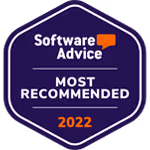Thinking about becoming a Registered Behavior Technician (RBT)? Before getting started it’s smart to understand exactly what the process will cost. This guide will walk you through every expense, from training and testing to background checks and renewal fees, and outlines ways to reduce your out-of-pocket costs. You’ll also get a look at typical RBT salaries and what kind of return you can expect on your investment.
What Is RBT Certification?
The Registered Behavior Technician (RBT) credential is the entry point into the field of Applied Behavior Analysis (ABA). It’s overseen by the Behavior Analyst Certification Board (BACB) and designed for individuals who assist Board Certified Behavior Analysts (BCBAs) or Board Certified Assistant Behavior Analysts (BCaBAs). RBTs are the hands-on professionals implementing behavior plans, collecting data, and supporting clients’ skill development across home, school, and clinic settings.
Who Can Become an RBT?
Before planning your budget, make sure you meet the basic qualifications:
- Age: Must be 18 or older
- Education: High school diploma or GED required
- Background Check: A clear criminal background check is necessary
- Training: Completion of a 40-hour BACB-approved RBT course
Tip: Confirm your eligibility early, missing documentation or background issues can delay the process and cost extra.
How Much Does It Cost to Get RBT Certified?
The overall price tag for RBT certification varies depending on where and how you complete each step. Below is a general breakdown for 2025:
Estimated total (if you pay everything yourself): between $300 and $900, depending on the program and extra costs.
Comparing Different Cost Paths
Before paying out of pocket, ask your employer if they offer RBT sponsorship or tuition reimbursement.
Other Costs You Might Overlook
Some expenses aren’t always listed up front, but can still affect your total cost:
- Study materials or practice tests ($20–$50)
- Unpaid time off to complete training or take exams
- Travel or childcare costs
- Continuing education (CEUs) for renewal, as of January 1, 2026
- Waiting periods before earning your first paycheck
Example:
If an RBT candidate currently gets paid about $500 for training and testing, but loses $200 in wages after taking two unpaid days for their assessment. Their total cost ended up closer to $700.
Ways to Lower or Cover the Cost
If you’re worried about paying for certification, there are several financial assistance options worth exploring:
- Employer Sponsorships: Many ABA clinics cover the full cost in exchange for a work commitment of 6–12 months.
- Tuition Reimbursement: Offered by some school districts and healthcare employers in exchange for work commitment.
- Workforce Development Grants: Certain states provide funding for behavioral health training programs.
- “Earn While You Learn” Programs: Some agencies pay you as a trainee while completing your coursework.
Return on Investment: What Can RBTs Earn?
Compared to other healthcare certifications, the RBT credential offers a strong return for a relatively small investment.
- Average Hourly Rate (2025): $20–$27 per hour
- Annual Salary Range: $40,000–$55,000
- Highest Paying States: California, New York, and Massachusetts
Career Growth Opportunities
Becoming an RBT is often the first step toward more advanced ABA roles.
You can:
- Move up to a Lead RBT or Supervisor position
- Continue your education toward BCaBA or BCBA certification
- Transition into related fields like psychology, education, or counseling
Example ROI:
A $600 investment in training can lead to a full-time role earning over $40,000 per year, one of the best cost-to-salary ratios in healthcare support careers.
Do Employers Pay for RBT Certification?
Many ABA providers offer paid certification programs to attract and retain staff.
These often include:
- Free or discounted RBT training and exam fees
- Mentorship by an in-house BCBA
- A required work commitment (usually 6–12 months)
Example:
At “Sunrise ABA Clinic,” new hires get their certification costs covered in full if they commit to one year of full-time work after completing training.
Where to Find RBT Training
There are several reputable ways to complete your required 40-hour course:
- Online Providers: Flexible, self-paced (e.g., CentralReach Institute, Relias, Verbal Behavior Institute)
- Community Colleges & Universities: Offer credit-bearing ABA introduction courses
- ABA Clinics: Some agencies train staff internally at no cost
Look for programs that combine the course and competency assessment; it saves time and simplifies scheduling.
How Long Does It Take to Become Certified?
Your exact timeline depends on your availability, employer support, and BACB processing speed.
Conclusion
Earning your RBT certification is one of the most affordable ways to enter the behavioral health field. With manageable upfront costs, opportunities for employer support, and solid earning potential, it’s a practical step for anyone interested in ABA. Earning your RBT certification is a valuable achievement because it’s a nationally recognized credential that demonstrates your competence in applied behavior analysis.
Quick Cost Planning Checklist
- 40-hour training
- Competency assessment
- BACB exam fee
- Background check
- Renewal & CEUs
- Hidden costs (materials, unpaid time, travel)
- Sponsorship or reimbursement options
Bottom line:
For under $1,000, you can start a rewarding career helping others and set the stage for long-term growth in Applied Behavior Analysis.






.avif)
















